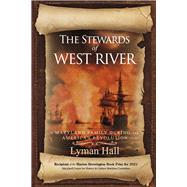The progenitor, David Steward, was born in Gauldry, a village in Fife, Scotland. During the Third English Civil War, He was a Scottish warrior who had been banished to the American colony by British General Oliver Cromwell. He gave David a choice of dying by the sword or being exiled to the American colonies. David chose to be exiled and lived on the West River, Maryland. Moreover, to fight for freedom another day. He never lost his dislike for the British, and his rebelliousness toward the British would be his legacy. Moreover, this passed through the generations of Stewards as David's legacy to his future generation of Stewards. They fought and suffered for one thing on their minds: America, freedom, and to live by the law.
The next was Stephen Steward, 4th Gen; in 1752, he built the largest shipyard on Fords Creek at the head of the West River. He built ships for the Chesapeake Bay and Merchant Ships to carry goods to Europe and the Caribbean. For Stephen, the war started in the middle of April 1775 when the British attacked Lexington and Concord. Embracing the stories of grandfather David's legacy ended any further dialogue of peace for Stephen. This was to change the entire operation of his shipyard. Stephen was in full support of the new Maryland government. He immediately offered his services to the new Maryland Council of Safety, which was Maryland's war department. His shipyard served as Maryland's Naval base, and he was an agent for the Council of Safety and Congress. His operation of building ships for the Chesapeake Bay and Merchant Ships immediately changed. He started building tenders, freighters, warships, and gunboats. He repaired captured enemy ships, and under the Council's orders, he sold the ship or rigged them as a warship for Maryland's Navy. In charge of the safety of Maryland, the Council of Safety was put in a massive situation. Their main goal was to protect Maryland's land, the Chesapeake Bay, and its contributors. They had an army, but they needed more troops and a navy. Their enemy was not only the British but the Tories & Picaroons, and the British and Picaroons already had their navy. There are numerous wartimes stories of Stephan attending to the needs of the Maryland Council of Safety.
His shipyard grew significant when embracing Maryland's Navy. Foremost in his capacity was as a shipwright building warships for Maryland. He served as Maryland's Navy storage for their supplies, ship equipment, cannons, anchors, and armament, launched missions, and supplied captains with crew members for each ship.
As an agent for the Council, he was responsible for acquiring food, pork, beef, whiskey, and rum. Not only for his men but the ship's crew and marines, and when Congress sent one hundred continental soldiers to guard the shipyard, more food. In a letter Stephen sent the Council asking for more money, he explained that he had seventeen ships in Fords Creek or some construction phase in the shipyard. He had as many as two hundred men working at the shipyard. There were freemen, indentured servants, and slaves.
On occasion, severing a need of the Councils, he ran blockades to take money to John Hancock, captained warships, supplied ships on the bay, and as a delegate, he served Anne Arundel County's Committee of Observation, supported the enrollment of minutemen and the gathering of ammunition and arms for them. One of his jobs for General George Washington was to impound ships, captains, and crew members on the Chesapeake to move General Lafayette's troops from Elton to Norfolk. Stephen Stewart lived with the fact that if the British caught him, they would have hung him and his family. After all, he was in charge of a nest of rebels aiming to overthrow the king's control of the colonies.








